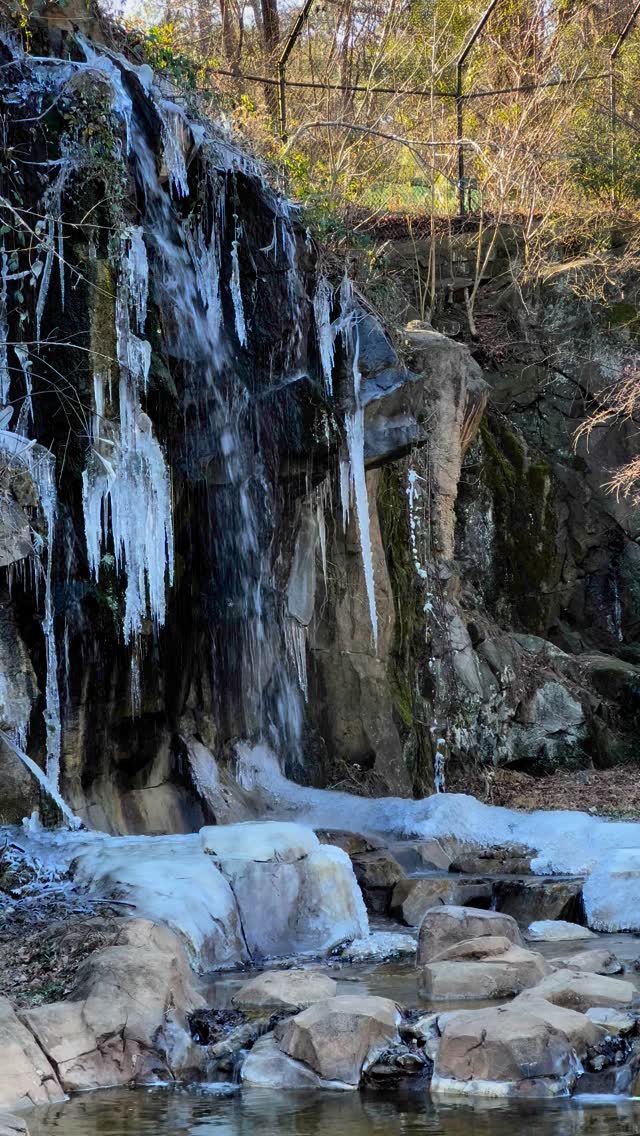- Understanding the hibernation cycles of bears and their biological adaptations for surviving winter.
- Examining how and why waterfalls freeze during winter and the ecological implications.
- Preparing zoos and wildlife facilities for wintery conditions, focusing on animal care and conservation.
- The role of public communication in managing winter weather challenges for museums and zoos.
- Emphasizing the importance of seasonal changes in wildlife behavior and conservation efforts.
As winter approaches, the natural world undergoes profound transformations. Among these are bears entering their winter slumber and waterfalls turning into icy spectacles. These changes not only captivate onlookers but also hold significant biological and ecological importance. This article delves into the intricate details of bear hibernation and the formation of frozen waterfalls, intertwined with the challenges faced by wildlife facilities during winter months.
Bears are fascinating creatures, particularly in their ability to hibernate. Hibernation is a state of dormancy that allows bears to survive prolonged periods of scarce food resources and harsh weather conditions. It is a process grounded in complex physiological adaptations. During this period, bears experience a significant drop in metabolic rate, heart rate, and body temperature, which helps them conserve energy. Remarkably, pregnant female bears give birth during hibernation, a testament to their incredible biological adaptations. Understanding these processes can inform conservation strategies and improve zoo management practices, ensuring these majestic animals thrive even in captivity.
Frozen waterfalls are another spectacle of nature that offers insight into winter’s impact on the environment. Waterfalls freeze due to the accumulation of ice crystals, which form as water droplets are exposed to sub-zero temperatures. The extent to which a waterfall freezes depends on factors such as water flow rate, ambient temperature, and the presence of wind. These frozen formations are not merely aesthetic; they influence local ecosystems, affecting animal behavior and plant growth. As waterfalls freeze, aquatic life must adapt or relocate, emphasizing the interconnectedness of ecosystems.
For zoos and wildlife facilities, winter presents a host of challenges and responsibilities. Ensuring the well-being of animals requires proactive measures, such as modifying enclosures to combat cold temperatures and providing diets that accommodate seasonal changes in metabolism. Facility managers often implement insulated shelters and heating systems to protect animals, particularly those not native to cold climates. Additionally, zoos must balance operational needs with public safety during inclement weather, often adapting programs and visiting hours.
Effective communication becomes crucial as these institutions navigate winter’s unpredictability. Museums and zoos must inform the public of potential changes, closures, or delays due to weather conditions. Utilizing websites and social media platforms offers timely updates and fosters engagement. Clear communication allows the public to plan visits accordingly, while also highlighting the facility’s commitment to both visitor safety and animal welfare.
Understanding the implications of seasonal changes on wildlife is essential for conservation efforts. As bears doze and waterfalls freeze, it is a poignant reminder of nature’s cyclical rhythms. Wildlife conservation is an ongoing journey that necessitates recognizing the importance of seasonal behaviors and environmental shifts. By studying these patterns, we can better protect species during vulnerable times, ensuring biodiversity is preserved for future generations.
The bears are dozin’ and the waterfall is frozen—a rhythmic expression encapsulating the dynamic changes that winter unfurls. Both phenomena, while seemingly straightforward, embody complex biological and ecological interactions. By appreciating these natural processes, we deepen our understanding of wildlife management, conservation, and environmental stewardship.
As institutions brace for wintery weather, it is imperative to apply this knowledge to enhance the care and preservation of wildlife. The efforts to maintain normal operations while prioritizing the well-being of animals reflect a commitment to upholding the delicate balance between human activity and nature. This commitment not only conserves biodiversity but also sustains the natural wonders that inspire learning and curiosity in visitors of all ages.
*****
Source Description
The bears are dozin’ and the waterfall is frozen 🐻
As the area braces for wintery weather, be sure to check our website and social media for updates about potential Museum closures, program changes, and delayed openings. We will be open regular hours (10 am – 5 pm) on Friday, January 10!

